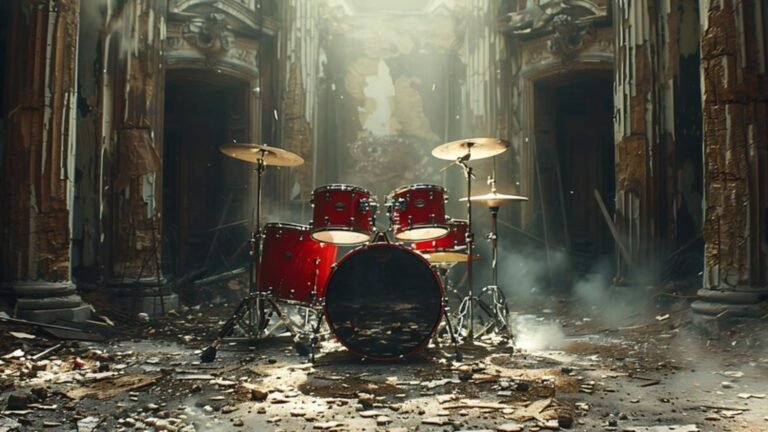The scimitar drum, an instrument often shrouded in mystique, plays a significant role in various musical traditions worldwide. Its unique shape and rich cultural history make it a fascinating subject for music enthusiasts and historians alike. This article explores the meaning, history, and importance of the scimitar drum, providing a comprehensive understanding of this intriguing musical instrument.
What is a Scimitar Drum?
The term “scimitar” typically refers to a curved, sword-like weapon originating from the Middle East. When applied to a drum, it evokes an image of a uniquely designed instrument that often embodies the essence of the cultures it represents. The scimitar drum is characterized by its distinct shape, which can resemble the curved blade of a scimitar sword.
In various cultures, the scimitar drum serves not only as a musical instrument but also as a symbol of heritage and identity. Its construction can vary, with materials ranging from wood and animal skins to modern synthetic materials. Each variation contributes to the drum’s unique sound and cultural significance.
Historical Background of the Scimitar Drum
Ancient Origins
The origins of the scimitar drum can be traced back to ancient civilizations in the Middle East and North Africa. The drum has been utilized in rituals, celebrations, and storytelling, often accompanying dances and ceremonies. The earliest references to drumming in these regions date back thousands of years, with evidence found in archaeological sites and ancient texts.
Evolution Through Cultures
As trade and cultural exchanges occurred throughout history, the scimitar drum evolved. It absorbed influences from various musical traditions, including Arabic, Persian, and North African music. The drum became a staple in folk music and later in classical compositions, reflecting the changing times and tastes of society.
The Scimitar Drum in Modern Music
Today, the scimitar drum is celebrated in a variety of musical genres. It has found its way into contemporary music, blending traditional sounds with modern rhythms. Many musicians incorporate the scimitar drum into their compositions, showcasing its versatility and ability to connect different musical styles.
Construction and Design of the Scimitar Drum
Materials Used
The materials used in constructing the scimitar drum greatly influence its sound quality and resonance. Traditional drums are often made from wood, with the drumhead typically crafted from animal skin. This combination allows for a warm, rich tone that enhances the overall musical experience. In contrast, modern versions may use synthetic materials, offering durability and consistency in sound.
Shape and Size
The scimitar drum’s shape is one of its defining features. Its curved body not only resembles the scimitar sword but also contributes to the instrument’s unique acoustic properties. The size of the drum can vary, with smaller versions used for intricate rhythms and larger ones for more robust sounds. This diversity in shape and size allows musicians to choose drums that best suit their style and performance needs.
The Role of the Scimitar Drum in Music
Cultural Significance
In many cultures, the scimitar drum is more than just a musical instrument; it is a symbol of heritage and identity. It plays a crucial role in ceremonies, festivals, and communal gatherings, fostering a sense of belonging and unity among participants. The drum often serves as a storytelling medium, conveying emotions and narratives through its rhythmic patterns.
Performance Contexts
The scimitar drum is utilized in various performance contexts, from intimate gatherings to large-scale events. In traditional settings, drummers may accompany dancers, enhancing the visual spectacle with rhythmic beats. In modern performances, the drum may be featured as a solo instrument, showcasing the drummer’s skill and creativity.
The Fusion of Genres
One of the most exciting aspects of the scimitar drum is its ability to blend with other musical genres. Musicians worldwide have embraced the drum, incorporating it into various styles such as jazz, rock, and world music. This fusion creates a unique sound that appeals to diverse audiences, highlighting the drum’s versatility and adaptability.
Conclusion
The scimitar drum holds a unique place in the world of music, representing a rich tapestry of cultural history and artistic expression. Its distinctive shape, construction, and sound contribute to its importance in various musical traditions. As it continues to evolve and adapt to contemporary music, the scimitar drum remains a powerful symbol of heritage, unity, and creativity.
ALSO READ:Exploring The English Horn: History, Techniques, And Tips
FAQs
What does the term “scimitar” refer to in the context of drums?
In the context of drums, “scimitar” refers to the unique shape of the drum, resembling the curved blade of a scimitar sword. This design contributes to the drum’s distinctive sound and cultural significance.
How is the scimitar drum typically constructed?
The scimitar drum is typically constructed from wood and animal skins for traditional versions. Modern drums may use synthetic materials. The curved shape of the drum enhances its acoustic properties.
What cultures prominently feature the scimitar drum?
The scimitar drum is prominently featured in various cultures, particularly in the Middle East and North Africa. It is used in traditional ceremonies, festivals, and modern music across these regions.
Can the scimitar drum be found in contemporary music?
Yes, the scimitar drum has found its place in contemporary music, where it is often blended with various genres such as jazz, rock, and world music. Its versatility allows musicians to create unique sounds and rhythms.
Why is the scimitar drum significant in cultural ceremonies?
The scimitar drum is significant in cultural ceremonies as it fosters a sense of unity and belonging among participants. It serves as a storytelling medium, conveying emotions and narratives through its rhythmic patterns, enriching the overall experience of communal gatherings.

